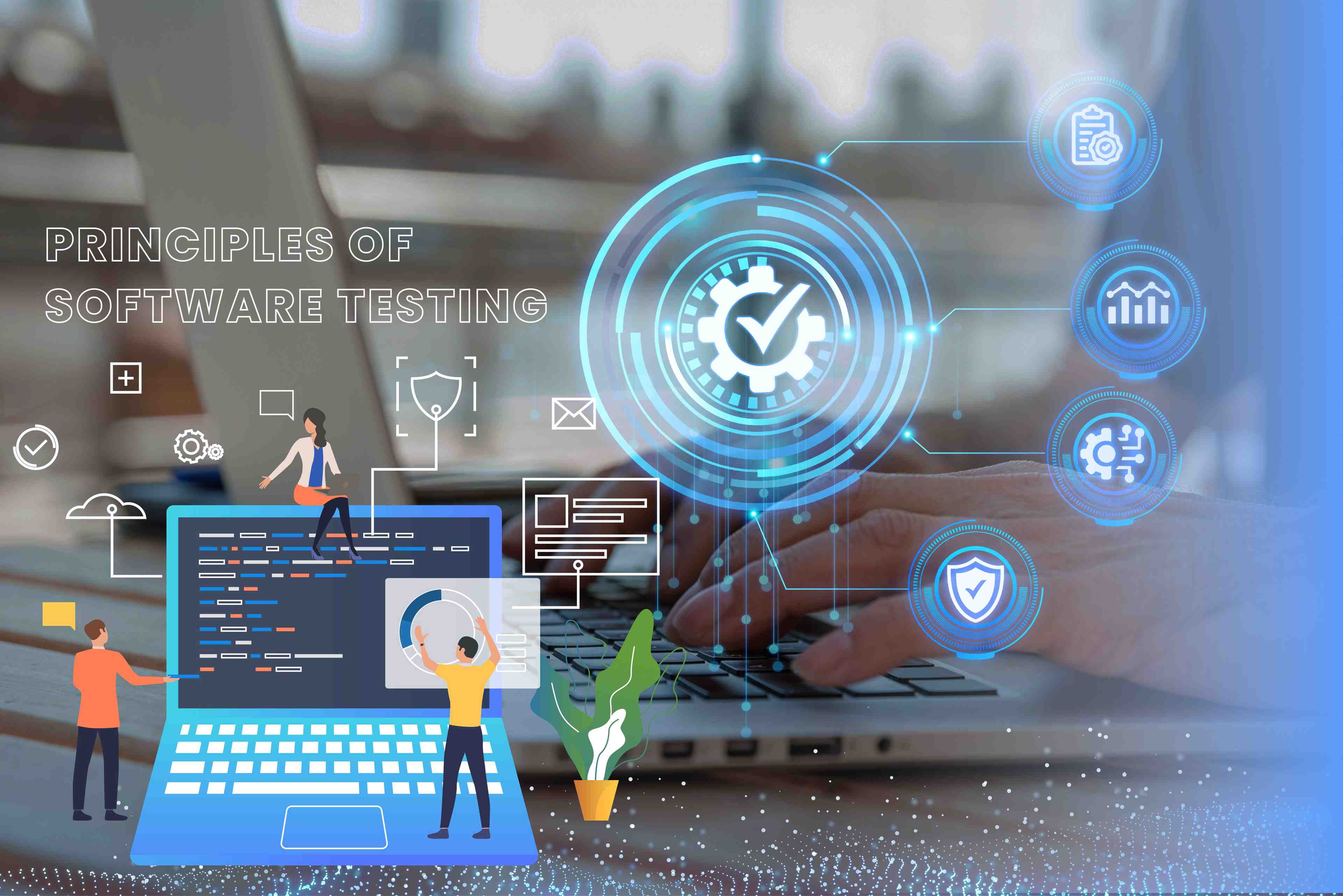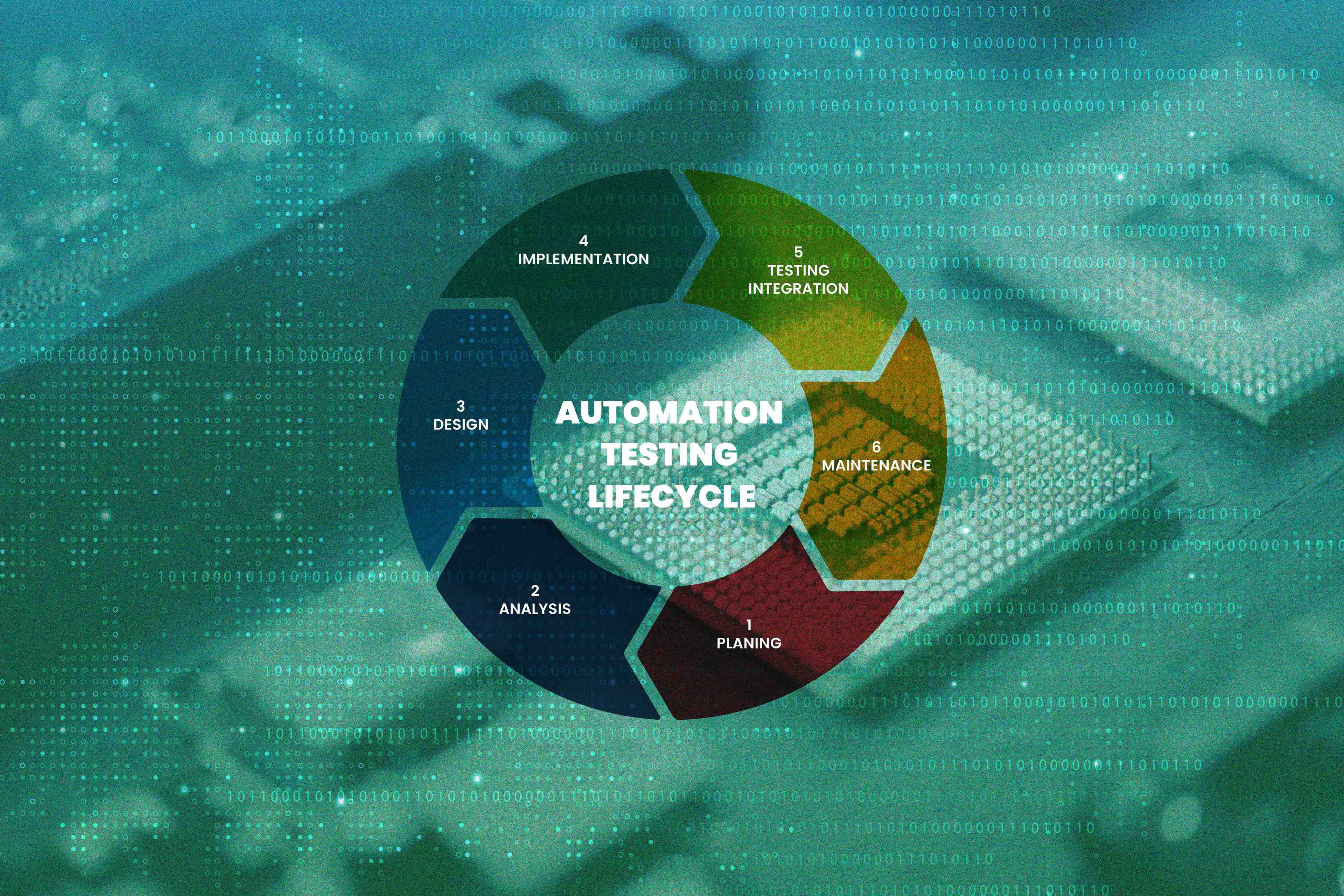

Our Services
Test Automation ServicesAI & Machine LearningBlockchainCRM ConsultingData Science & EngineeringDevOpsDigital MarketingDigital TransformationEmbedded Software DevelopmentERP Consulting ServicesManaged IT ServicesMergers & Acquisitions AdvisoryQA And Testing ServicesRobotic Process Automation SAP Consulting DevelopmentSoftware and Application DevelopmentSQL ConsultingStrategy ConsultingSustainability
- Contact Us
Our Services
- Test Automation Services
- AI & Machine Learning
- Blockchain
- CRM Consulting
- Data Science & Engineering
- DevOps
- Digital Marketing
- Digital Transformation
- Embedded Software Development
- ERP Consulting Services
- Managed IT Services
- Mergers & Acquisitions Advisory
- QA And Testing Services
- Robotic Process Automation
- SAP Consulting Development
- Software and Application Development
- SQL Consulting
- Strategy Consulting
- Sustainability
Insight
Company
Industries
- Contact Us

Software Testing Models: Examples, Advantage & Disadvantage
Discover examples, advantages, and disadvantages of software testing models. Learn different types of software testing models and their effectiveness.
- insight
- /
- blog
- /
- software-testing-models
Software that hasn't been thoroughly tested is useless. Before putting software on the market, its codes and other parts need to be tested. If they aren't, the software could be full of bugs and errors, which would hurt the user experience. Software testing is essential if you want to prevent this and maintain a positive reputation for your software in the marketplace.
We'll talk about the many different software models and approaches that are used in software development. Each sdlc model has its advantages and disadvantages, which ultimately depend on the nature and complexity of your project's technical requirements.
In this blog article, we'll examine all model for testing in software testing methodologies in more depth and provide a more comprehensive critique for you to choose the best software models.
Come on, then!
What are Software Testing Models?
Software testing models are systematic frameworks or approaches that guide the planning, execution, and management of software testing activities within the software development lifecycle. These models provide structured methodologies for conducting testing activities, ensuring thorough coverage and effectiveness in verifying the quality and functionality of software applications.
Some commonly used software models include:
- Waterfall model,
- V model,
- Agile model,
- Spiral model
- Iterative model
Each model has its own characteristics, testing phases, and sequencing of activities. These models help in organizing and prioritizing testing efforts, defining the scope of testing, and establishing a systematic approach to identifying and rectifying defects.
Software testing models provide a roadmap for testers to plan their testing activities, set expectations, and establish a logical sequence of testing phases. They help in identifying the testing objectives, defining test cases, executing test scripts, analyzing test results, and ensuring the software meets the desired quality standards.
For more information: How to Create Test Cases for Automated Tests? With Example
Waterfall Model
When creating software, the "Waterfall Model" method breaks out each step into its own distinct phases. With the waterfall model in software testing, the output of one stage is fed into the input of the next step. The four phases that make up the waterfall approach are requirements collection and analysis, software design, code development, testing, and maintenance.
This paradigm's requirement collection and analysis phase comprises keeping tabs on and documenting any and all system requirements that may arise throughout the development of a given piece of software. This, in turn, is grounded in the software requirement specification, which lays out in great detail the needs of the end user. Here, you'll also construct the Requirement Specification.
The document is being written to serve as a reference for the next stage, which is software development. Remember that after you've moved on to the next stage, you won't be able to change the requirements. Therefore, it's important to get very detailed requirements from the final consumer.
Waterfall Model Advantages
- Easy to implement and control.
- The time spent in the development phase may be reduced by careful requirement collection and analysis.
- The amount of time and effort needed to test each stage is modest.
Waterfall Model Disadvantages
- There is no way to modify or upgrade the user specifications.
- Once you've moved on to the next stage, there's no turning back.
- Phase two cannot begin until phase one is complete.
Waterfall Method Example
Let's consider an example of using the waterfall method to develop a mobile messaging application.
In the requirements gathering phase, the development team collaborates with stakeholders to define the detailed requirements of the messaging application. This includes features such as user registration, messaging functionality, contact management, and notifications.
Once the requirements are finalized, the design phase begins. The development team designs the architecture, user interface, and database structure of the messaging application. This includes creating wireframes, mockups, and database schemas.
After the design phase, the development team moves on to the implementation phase. They start coding the messaging application based on the finalized design. This involves writing the backend server code, front-end interfaces, and integrating the necessary APIs.
Once the coding is completed, the testing phase begins. The development team performs various types of testing, including unit testing, integration testing, system testing, and user acceptance testing. They verify that the messaging application functions correctly, meets the specified requirements, and is free from defects.
You might like:
- Smoke Testing vs Regression Testing: Which One to Use and When?
- Unit Testing vs Functional Testing Comparison
- Manual Testing vs. Automation Testing
- Difference Between Black Box Testing and White Box Testing
- Streamline Your Testing Process with the Automation Testing Life Cycle
After successful testing, the application enters the deployment phase. The development team prepares the application for deployment by configuring servers, setting up databases, and ensuring proper security measures are in place. They then release the application to the intended users, making it available for download and use.
Once deployed, the maintenance and support phase begins. The development team provides ongoing support, addressing any issues, fixing bugs, and releasing updates as needed. They also gather user feedback for future enhancements and improvements.
The waterfall method follows a linear and sequential approach, where each phase is completed before moving on to the next. It is important to note that in the waterfall method, it can be challenging to accommodate changes or new requirements that may arise later in the development process.
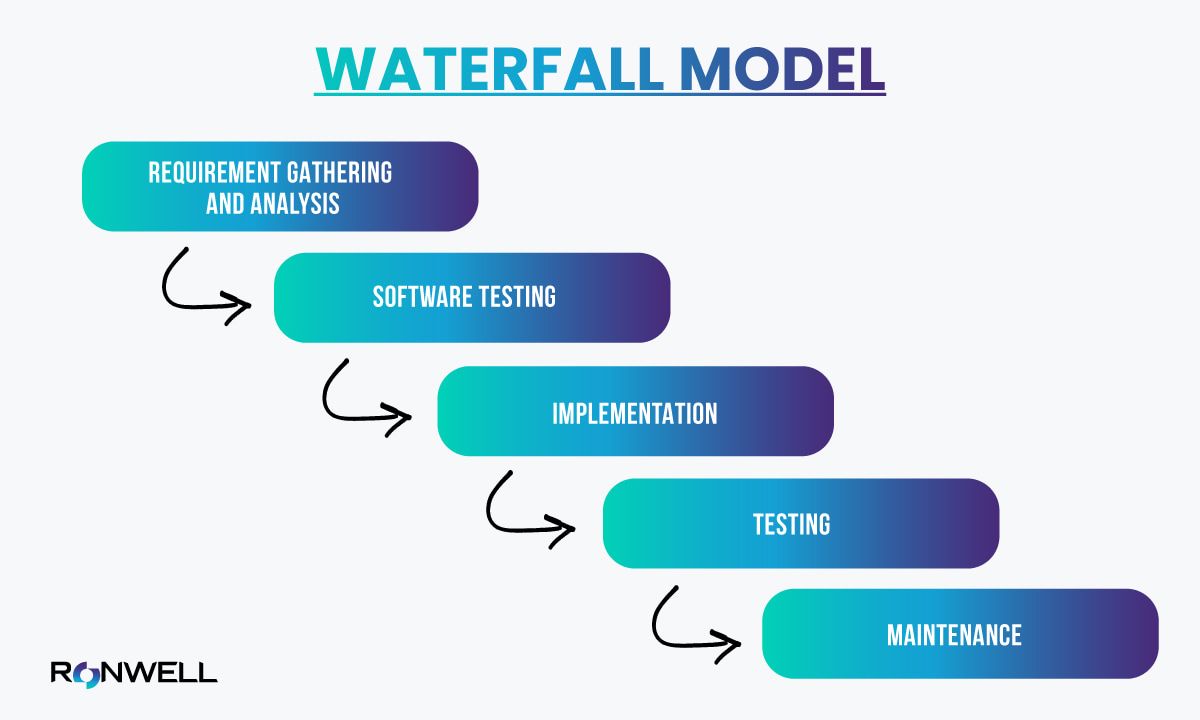
V Model
Most people agree that the v model in software testing is better than the waterfall model.
Here, both uphill and downhill activities—development and test execution, respectively—are performed concurrently. Unit testing is performed first under the v model in software testing and then expanded to include the integration of the whole system.
So, SDLC is made up of five stages: unit testing, integration testing, failure testing, system testing, and acceptance testing.
V Model Advantages
- The model is easy to use because testing tasks like planning and test design are done before writing. This saves time and makes it more likely that the project will be successful.
- Most flaws are found early on, and the flow of flaws from top to bottom is usually avoided.
V Model Disadvantages
- It is a strict plan.
- There are no early versions of the product because the software is being made during the application phase.
- If changes happen in the middle, the test record needs to be changed.
V Model Example
Let's consider an example of developing a web-based e-commerce platform using the V model. In the V model in software testing, the development and testing activities are aligned in a sequential manner, with each phase of development having a corresponding testing phase.
- In the requirements phase, the development team works closely with stakeholders to gather and document the requirements for the e-commerce platform. Simultaneously, the testing team starts developing the test plan and test cases based on the documented requirements.
- In the design phase, the development team creates the architectural and detailed design of the e-commerce platform, ensuring it aligns with the specified requirements. The testing team also prepares the test environment and test data based on the design specifications.
- In the implementation phase, the development team starts coding and building the e-commerce platform according to the design. Meanwhile, the testing team performs component testing to verify the functionality of individual modules and components.
- Once the implementation phase is complete, the integration phase begins. The development team integrates the individual components and modules to form the complete e-commerce platform. Concurrently, the testing team conducts integration testing to ensure the proper functioning of the integrated system.
- After the integration phase, the focus shifts to the testing and validation phase. The testing team performs system testing, where they validate the entire e-commerce platform against the defined requirements. This includes testing various scenarios, such as user registration, product search, shopping cart functionality, and payment processing.
Finally, in the deployment phase, the development team deploys the e-commerce platform to the production environment. The testing team performs acceptance testing, where they ensure that the deployed system meets the business and user expectations.
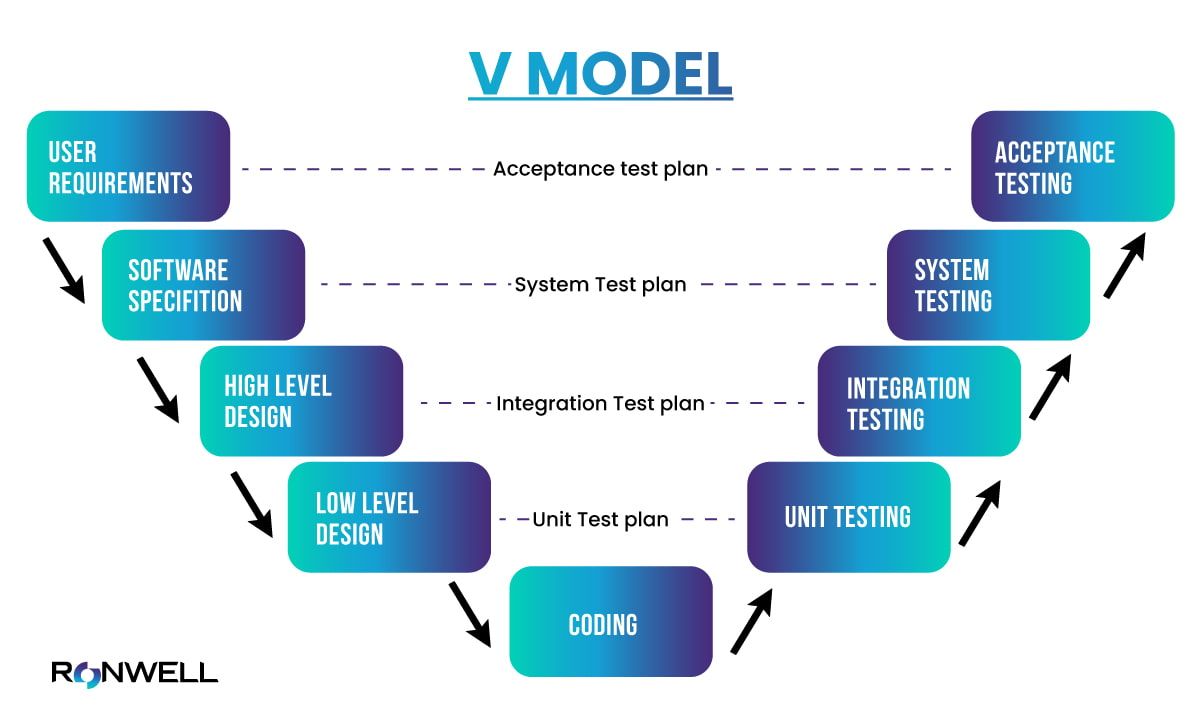
Agile Model
The Agile model facilitates the generation of requirements and solutions through collaborative efforts among multiple cross-functional teams. It is also known as iterative and incremental models.
Why automation testing is crucial for agile success?
The agile model in software testing emphasizes process flexibility and customer satisfaction by delivering a functional software product quickly and dividing it into small incremental builds.
Agile Model Advantages:
- Customer satisfaction is guaranteed through rapid and continuous development of deliverables.
- The flexibility of the agile model in software testing allows for regular communication and collaboration among customers, developers, and testers.
- Agile model in software testing enables the creation of functional software in a timely manner while accommodating changing requirements.
Agile Model Disadvantages:
- Estimating the necessary work at the beginning of the development cycle can be challenging, particularly in complex and large-scale software projects.
- If the customer lacks clarity regarding project goals, continuous communication may lead to deviations from the intended path.
We explained Automation Testing Goals And Objectives in our blog post, check it out.
Agile Method Example
Here is an agile method example for you! Let's develop a coffee ordering mobile application using the Agile model.
In the Agile model, the development process is divided into short iterations called sprints. Each sprint typically lasts 1-4 weeks and focuses on delivering a functional increment of the software.
In the first sprint, the development team collaborates with stakeholders to define the core features and requirements of the coffee app, such as user registration, menu display, and order placement. They break down these requirements into smaller tasks and prioritize them based on customer needs.
During the sprint, the team develops and tests the identified features. At the end of the sprint, a working version of the app is ready for review and feedback from stakeholders, including coffee shop owners and potential users.
Based on the feedback received, the team plans the next sprint and determines the new set of features and improvements to be implemented. This could include adding features like payment integration, customization options, and user reviews.
Throughout the development process, the team continuously interacts with stakeholders, gathers feedback, and adapts the project scope and priorities accordingly. This iterative and collaborative approach ensures that the coffee app evolves based on user requirements and market trends.
With each sprint, the coffee app becomes more feature-rich, stable, and aligned with customer expectations.
The Agile model allows for flexibility, rapid iterations, and frequent delivery of functional increments, enabling the development team to deliver a high-quality coffee app that meets the needs of customers and business owners.
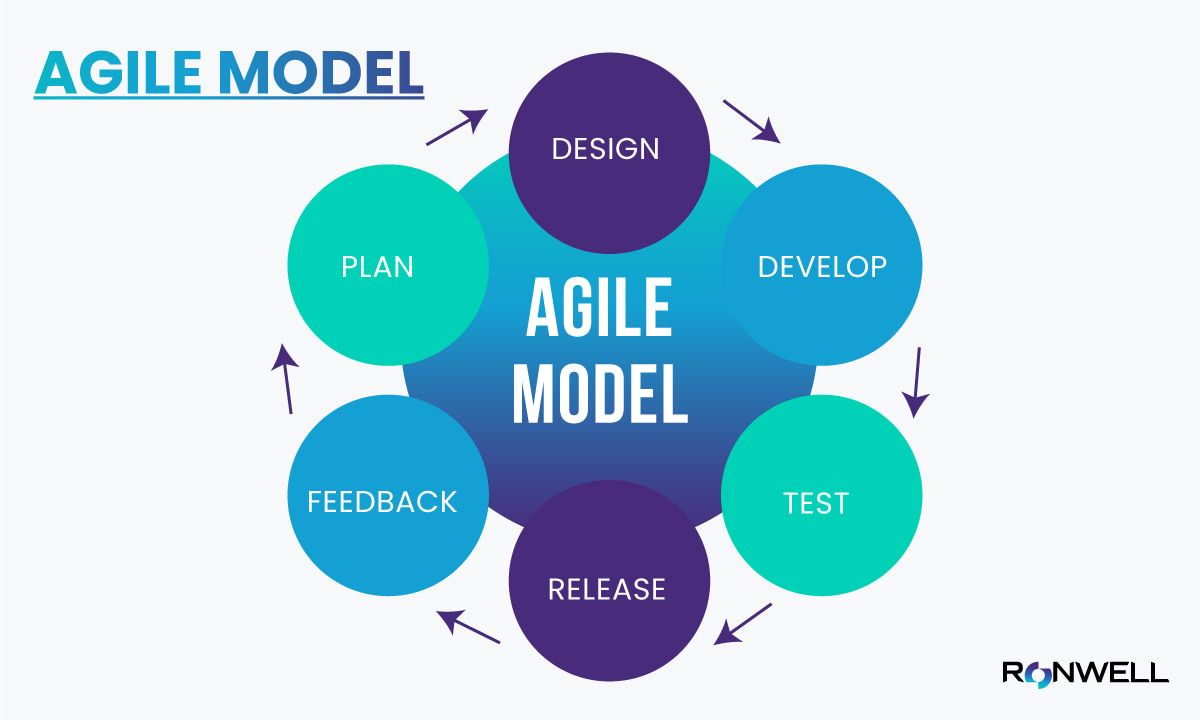
Spiral Model
The spiral model holds significant importance as a sdlc model, primarily due to its emphasis on risk management and mitigation. Similar to the Agile methodology, but with a stronger focus on risk analysis, this approach to software testing.
The spiral model in software testing contains many stages, such as planning, risk analysis, engineering, and assessment. In this situation, you must compile the necessary information and carry out the risk assessment at the base level, which serves as the foundation for all higher spirals. Here we have Let’s identify the disadvantage of spiral model and advantages.
Spiral Model in Software Testing Advantages
- Large and complicated systems can benefit from it.
- Adding features is possible based on the modified conditions.
- Early in the cycle, software is created.
Let’s identify the disadvantage of spiral model.
Spiral Model in Software Testing Disadvantages
- It is an expensive model that calls for very specialist risk analysis knowledge.
- It struggles with basic tasks.
Spiral Model Example
A spiral model example in software development could be the creation of a mobile banking application.
The development team starts with an initial prototype that includes basic functionalities like user registration and account access.
They then gather feedback from users and stakeholders, identifying potential risks and areas for improvement. In the next iteration, they will incorporate the feedback and add additional features such as fund transfers and bill payments.
This process continues, with each cycle addressing risks, refining the application, and gradually building a comprehensive and robust mobile banking solution.
When to use the Spiral Model?
The Spiral Model is used in software engineering when dealing with large-scale projects.
It is suitable when frequent releases are required, prototyping is necessary, risk and cost evaluation is crucial, and projects have moderate to high levels of risk.
This model is particularly beneficial for handling complex and ambiguous requirements and allows for modifications throughout the development process. Additionally, it is useful when long-term commitments are impractical due to shifting economic priorities.
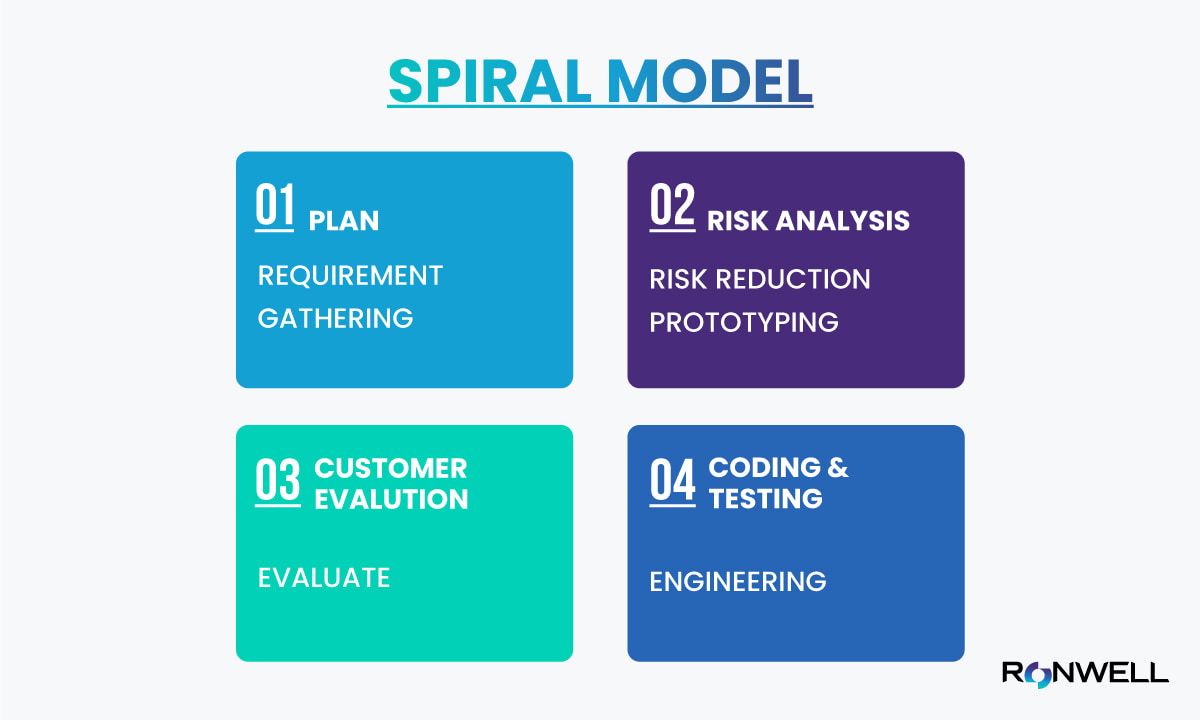
Iterative Model
The Iterative model does not require a comprehensive list of requirements prior to starting the project. Instead, the development process begins with the requirements of the functional part and allows for expansion later on.
This model involves repetitive cycles, with each iteration producing a new version of the product.
Each iteration focuses on developing a separate component of the system, which is then added to the previously developed functional parts.
Iterative Model Advantages:
- Risks can be better controlled as high-risk tasks are prioritized and completed early in the process.
- The progress of the project can be easily measured and monitored.
- Problems and risks identified in one iteration can be addressed and prevented in subsequent cycles.
Iterative Model Disadvantages:
- The Iterative model requires more resources compared to the waterfall model.
- Managing the iterative process can be challenging.
- Even at the final stage of the project, it may be difficult to fully determine and address all potential risks.
Iterative Model Example
Iteration is widely used across various industries, with many companies adopting iterative development processes due to their suitability for products and services of all sizes, prices, and purposes.
This approach brings benefits to businesses, such as regular product releases and customer anticipation for updates. Here are some examples of iteration in different industries:
Science and medicine
The scientific method aligns with the iterative development process, as scientific theories undergo peer review, publication, and continuous research and testing.
Medicine applies iteration to improve vaccines' efficacy and develop less invasive diagnostic methods.
Hardware and software
Iterative development connects the processes of developing hardware and software. In video game design, companies plan software development to leverage high-quality hardware, leading to demand for specific hardware and driving innovations in manufacturing and engineering.
This cycle of innovation helps hardware manufacturers stay competitive while reducing prices of older iterations.
**An example of the Iterative Model in software development can be seen in the creation of a mobile application for a ride-sharing service.
In the initial iteration, the development team focuses on building the core functionality of the application, such as user registration, driver matching, and basic ride request features. The team then releases this version to a limited user group for testing and feedback.
Based on the feedback received, the team identifies areas for improvement and enhancement. In subsequent iterations, they add new features and refine existing functionalities. For example, they may introduce a rating system for drivers, implement payment integration, and enhance the user interface based on user feedback.
With each iteration, the team collects feedback, conducts testing, and makes necessary adjustments. The iterative approach allows for frequent releases and continuous improvement of the application based on user needs and market demands.
This process continues until the desired level of functionality, stability, and user satisfaction is achieved.
The iterative model allows for flexibility and adaptability, enabling the development team to respond to evolving requirements and incorporate changes efficiently throughout the development cycle.
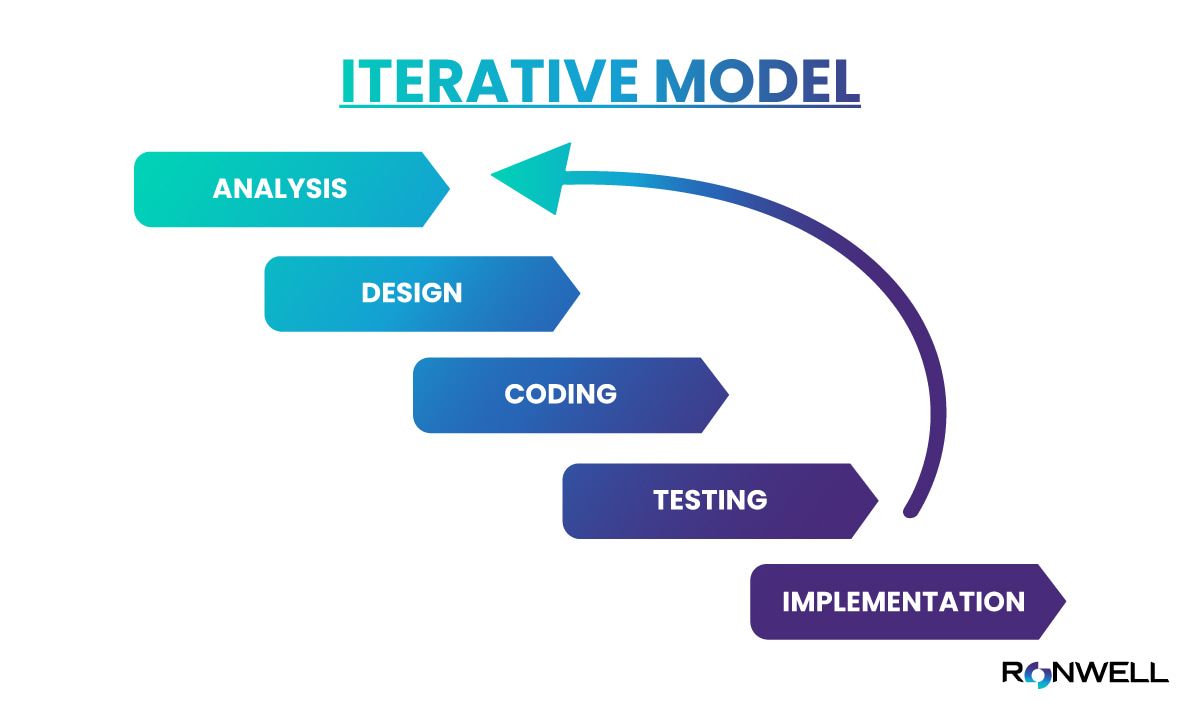
How Can Ronwell Help Software Testing Models?
How can we assist you with software testing models?
Our experts can help you select the most appropriate testing model for your project, considering your specific requirements and constraints. We can provide guidance on the advantages and disadvantages of different models and assist you in implementing the chosen model effectively.
Our goal is to ensure that you have the right software testing approach to achieve quality and success in your software development endeavors.
What Is the Importance of Software Testing Models?
Software testing models are an integral part of software development methodologies, such as the waterfall model, V model, agile model, and spiral model. These models provide a structured framework for testing activities within the larger context of software development. They help ensure the quality and reliability of software by systematically identifying and addressing defects and risks.
The waterfall model in software testing follows a linear, sequential approach, where testing occurs after each phase of development. The V model in software testing emphasizes a parallel approach, with testing activities corresponding to each stage of the development process. On the other hand, the agile model in software testing focuses on iterative and incremental development, with continuous testing throughout the project.
So, software testing models, including the waterfall model, V model, agile model, and spiral model, provide structured frameworks for testing activities within the software development process. They help identify and address defects, mitigate risks, and ensure the quality and reliability of software applications. Understanding and selecting the appropriate model for testing is essential for successful software development and delivery.
Final Thoughts
Software testing models are important as they ensure the effectiveness and efficiency of software testing activities. By adopting the right model for your project, you can enhance the quality of your software, reduce risks, and improve customer satisfaction.
If you need guidance or assistance in choosing and implementing the right software testing model for your project, consider reaching out to Ronwell Digital.
As experts in software development and testing, we can provide valuable insights and support to ensure your testing efforts align with your project goals.
Contact us today to learn more about our services and how we can help you optimize your software testing processes.
Remember, selecting the right software testing model is a critical decision that can significantly impact the success of your project! So, make an informed choice and use the benefits of a well-planned and executed testing model.
FAQs
What are different software testing models?
Different software testing models include the waterfall model, V model, agile model, spiral model, and hybrid model.
These models offer various approaches to organizing and executing testing activities within the software development process.
Which Software Methodology to choose?
The choice of software methodology depends on various factors such as project requirements, team capabilities, timeline, and customer needs. Agile methodologies like Scrum or Kanban are often suitable for projects with evolving requirements and a need for flexibility, while the waterfall model may be appropriate for projects with well-defined requirements and a linear development process.
Writer:

Halime Yılmaz
Content Marketing Specialist
11 min read
7 August 2023, Monday
Related Posts
Related Industries
Related Services









